Multiselection Workflow
The OCD add-on allows you to apply damage to multiple objects simultaneously. This process involves the selection of a Key object and the setting of necessary parameters.
- Begin by selecting the
Key objectand damage it with required parameters. - Click on
Apply. - Now, select all the objects to which you want to apply damage. Make sure the
Key objectis the last object you select. - Click on
Make Damage.
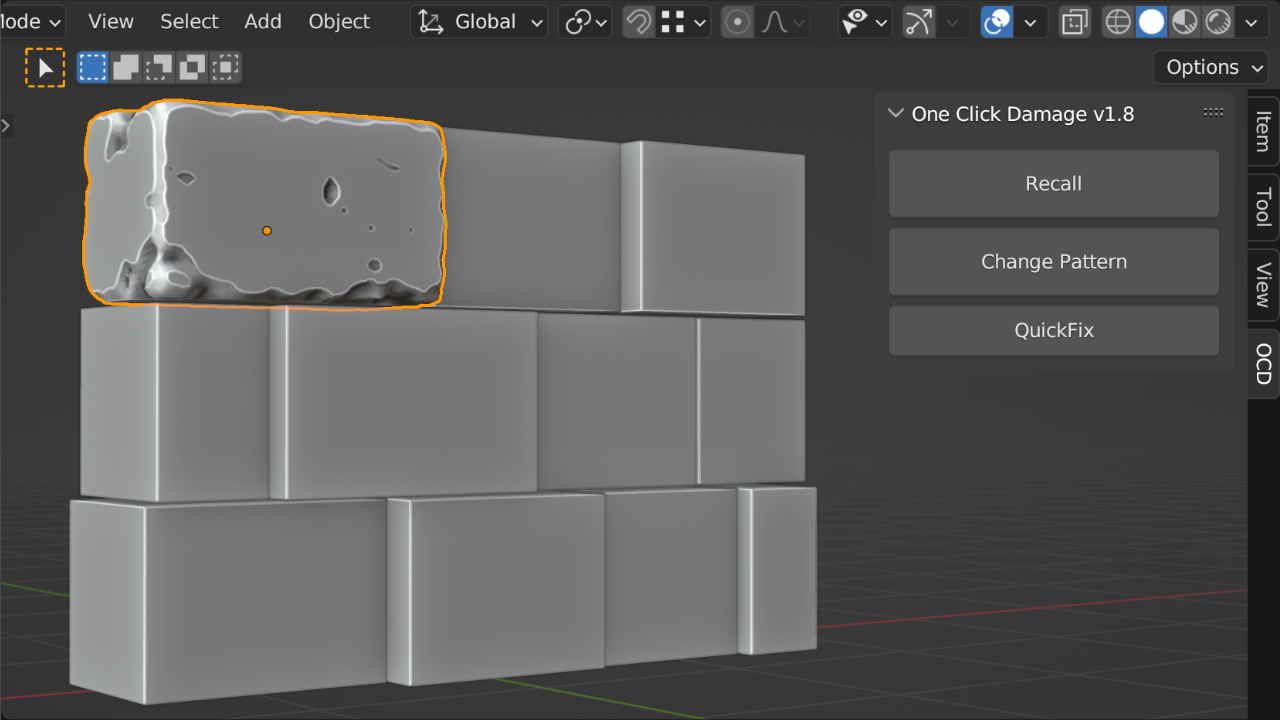
OCD will apply consistent damage based on the size of the Key object across all selected objects.
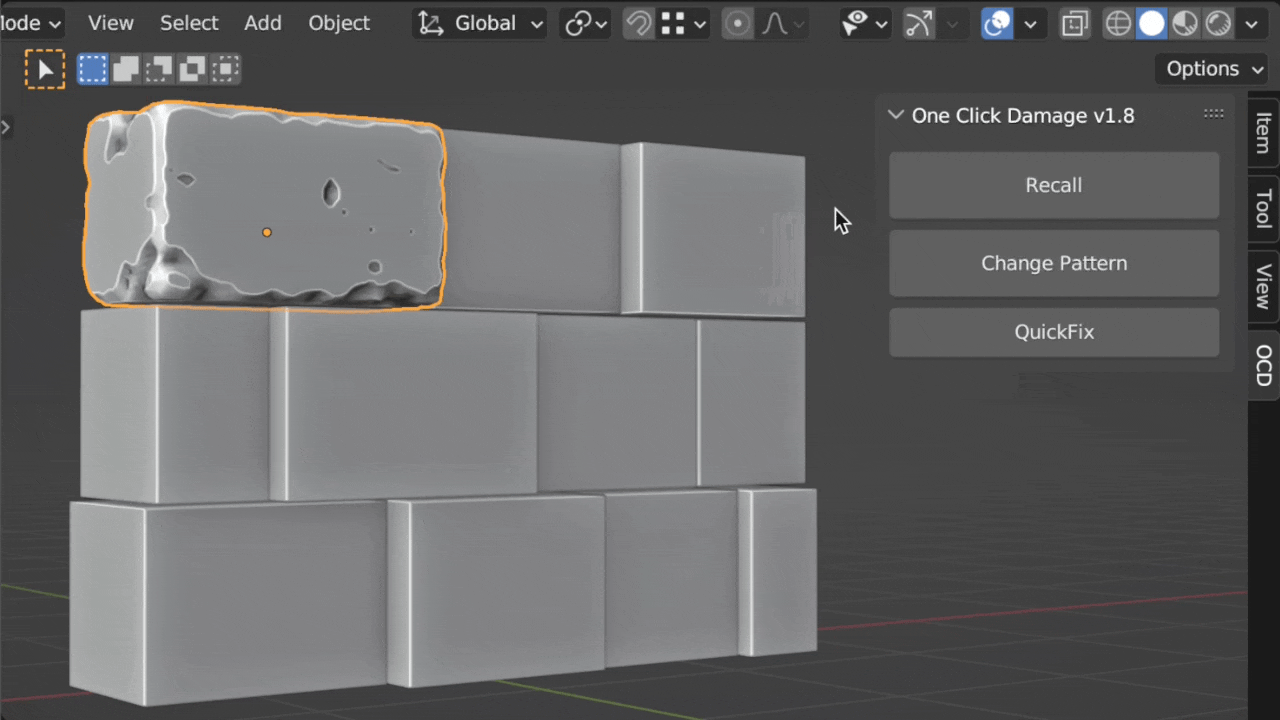
Note
You can Recall specific bricks to apply individual Damage at any time.
Material Consistency
The OCD add-on's Material Consistency allows for uniform damage effects on multiple objects, like bricks in a wall, ensuring they all show similar wear and tear despite size differences. It applies damage based on the last selected object's size, creating a consistent appearance across objects as if they were made from the same material and aged together.
Consider these two examples:
The first image shows what happens when each brick is damaged individually.
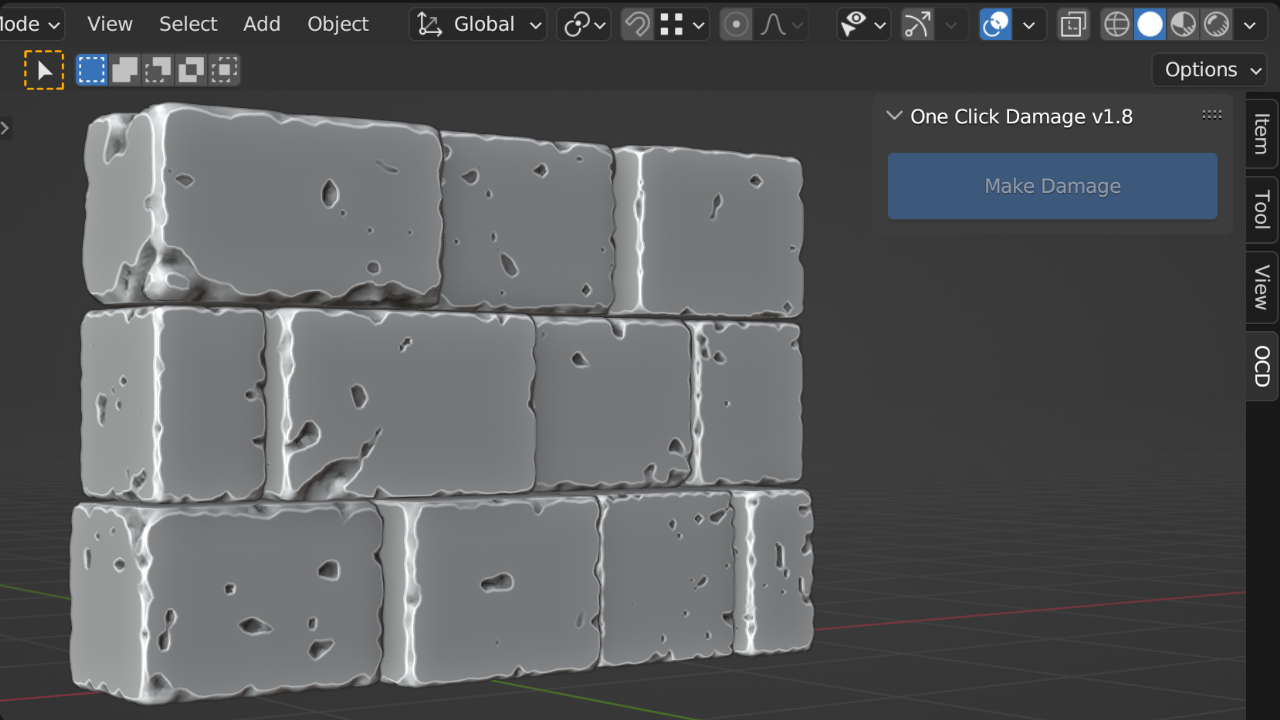
The second image demonstrates the result when all the bricks are damaged at the same time. Note, the first large brick on the top was the Key Object.
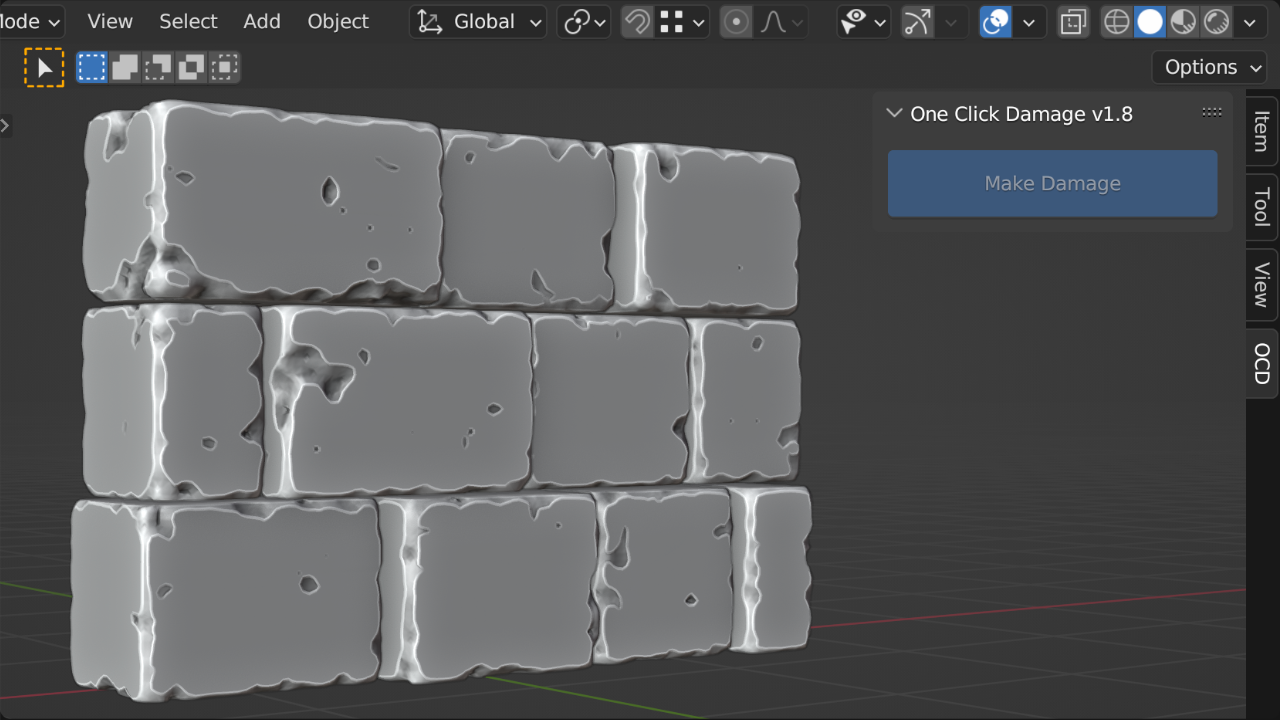
These examples illustrate the versatility of the OCD add-on. Depending on your needs, you can decide how to apply the damage to achieve the desired look.
Recall
The OCD add-on includes a Recall feature that lets you bring back the original object even after damage has been applied. This tool is handy when you want to tweak the damage parameters or modify the object itself, making the OCD add-on truly non-destructive.
Note
The Recall feature can be applied to multiple objects simultaneously.
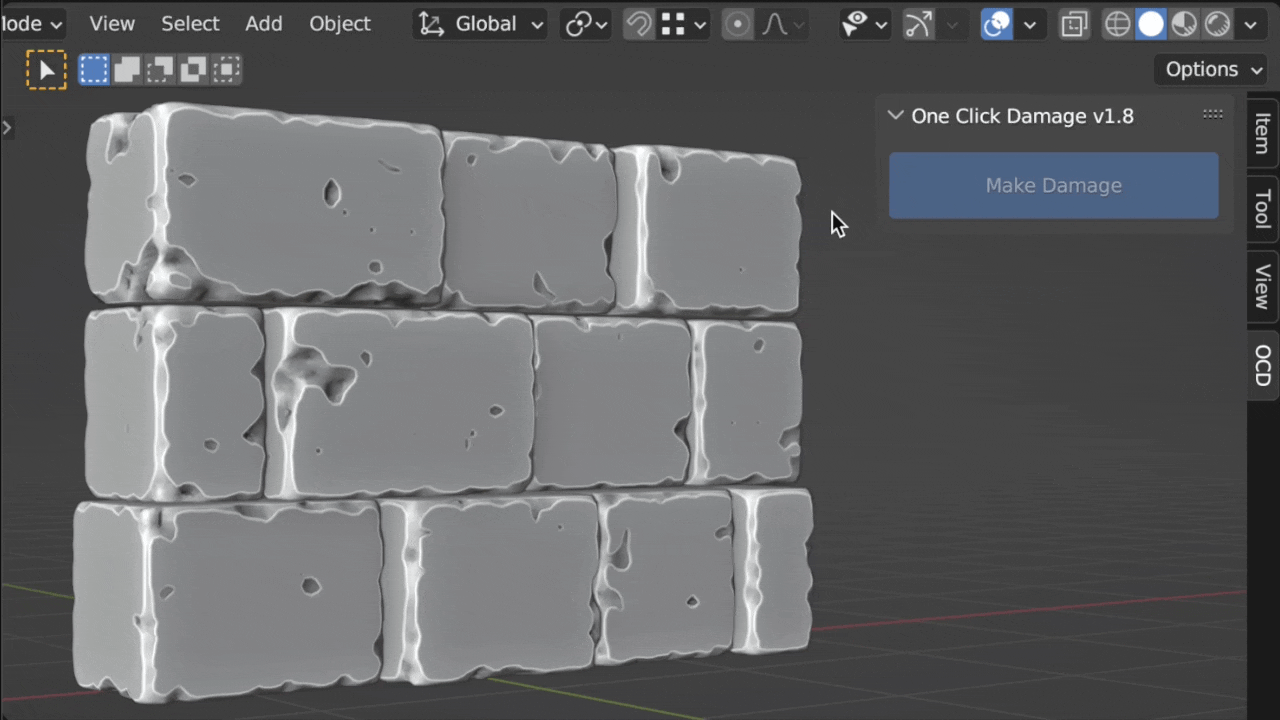
Ctrl Recall
You can hold Ctrl (Command key on MacOS) while clicking the Recall button to recall the original object as a copy.
Change Pattern
The OCD add-on's Change Pattern feature lets you alter the noise pattern of damaged objects without modifying damage settings. It can differentiate between noise types on various objects, such as Clouds versus Musgrave, ensuring patterns change consistently and accurately.
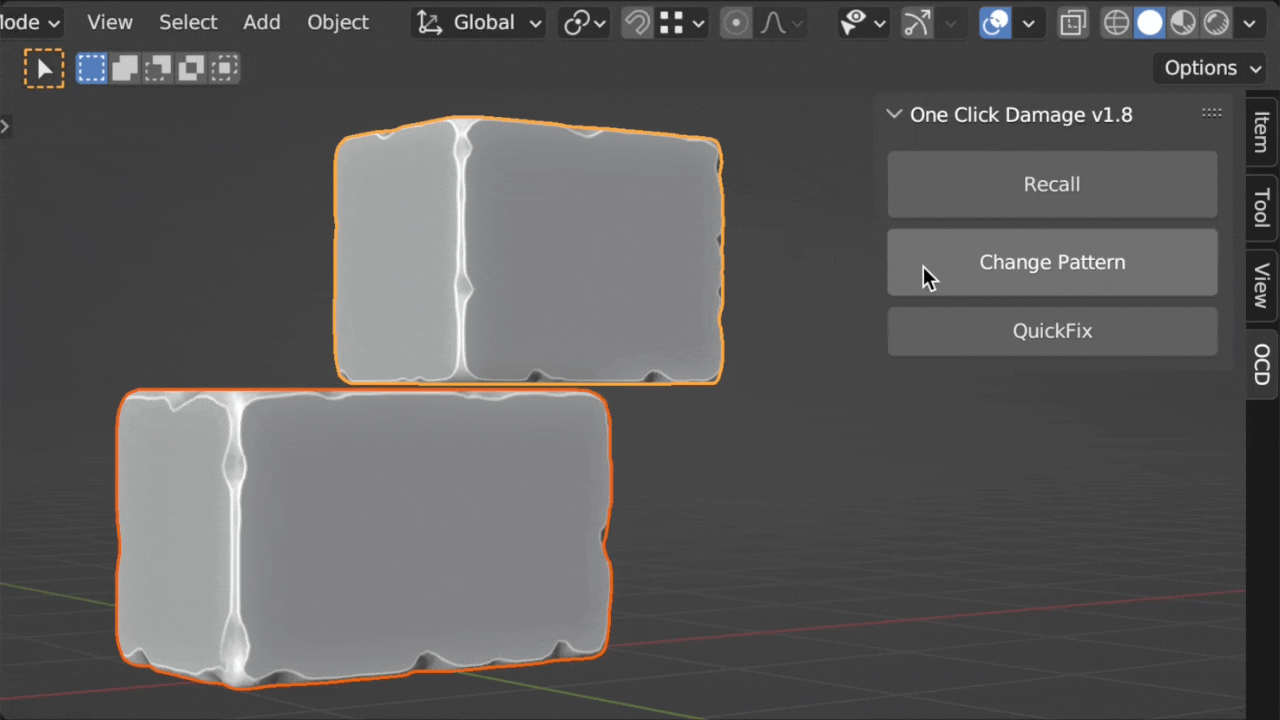
Noise Type Swap
Noise Type Swap lets you quickly swap patterns, like Clouds and Musgrave, between objects. Simply select Musgrave(swap to), then Clouds (swap from), hold 'Ctrl', and hit Change Pattern for an easy transition.
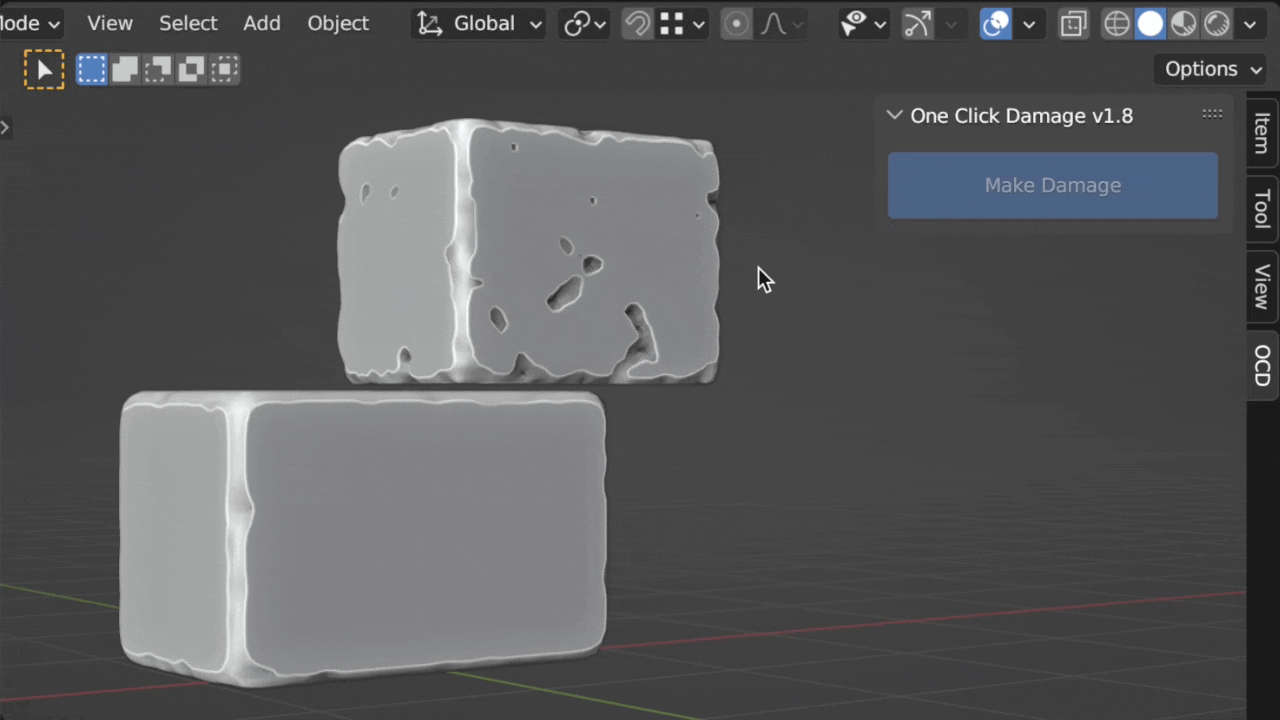
Dummy Cube Technique
To manage Damage resolution, you can create a Dummy Cube. The cube's size sets the damage resolution for your target object, especially useful for long or thin items where default resolution is too large. The process mirrors the Multiple Selection workflow but with simple Cube as the Key object. You can then delete the cube after damage is applied or leave it in place for future use.
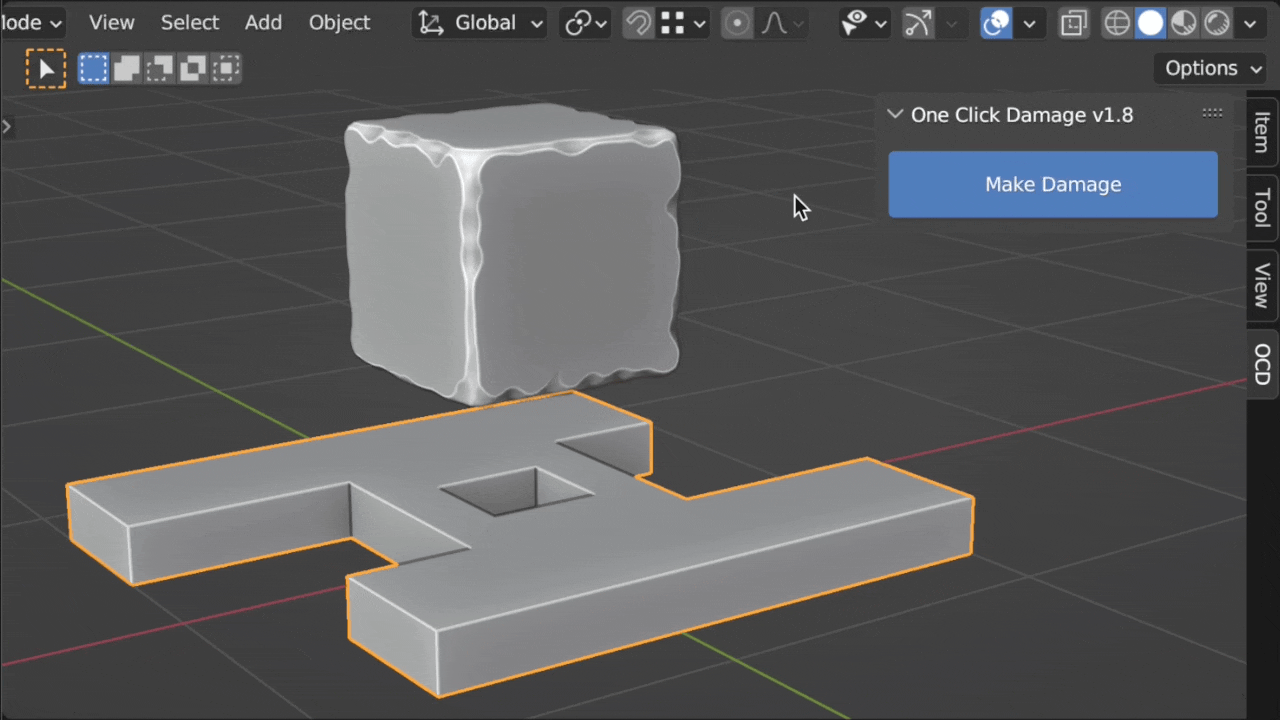
Note
This approach provides a clear visual indication of the upcoming damage resolution, eliminating the need to guess the right resolution number in the preferences.